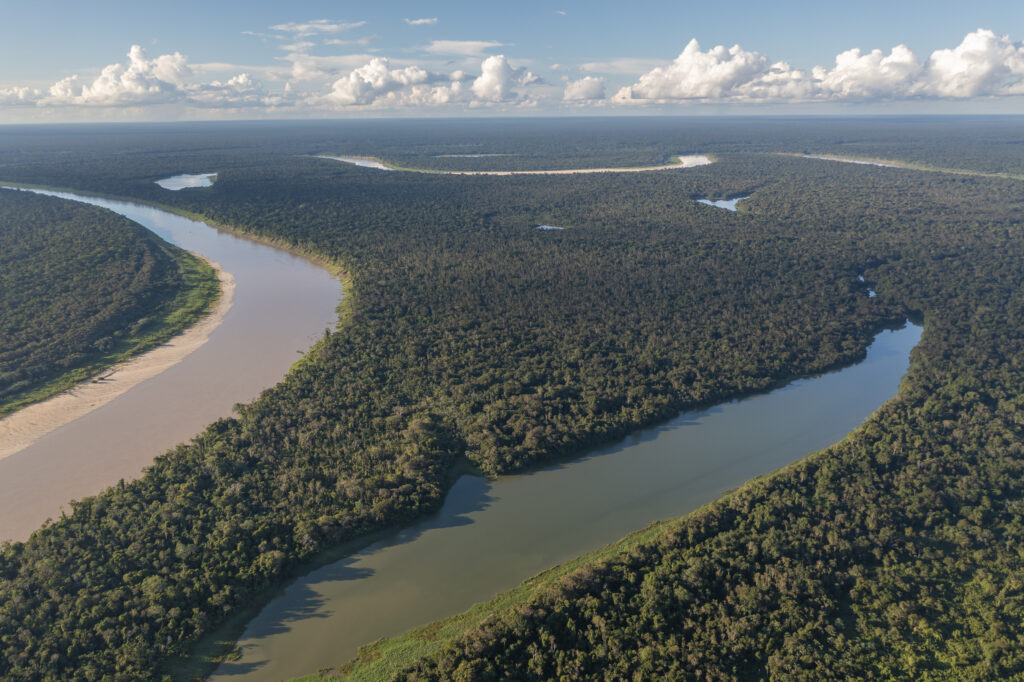The Amazonian wetlands are essential for biodiversity and for thousands of people who depend on these ecosystems. The recognition of the Juruá River by the Ramsar Convention strengthens its protection and highlights its global importance.
By Hugo Costa

Seasonal or perennial wetland environments play a crucial role in biodiversity and human well-being. These environments are highly productive and support a high diversity of species. Additionally, they are essential for millions of people, providing ecosystem services such as fishing, water purification, water regulation, nutrient recycling, and fertile soils for agriculture. However, protecting these environments is challenging because their connection to areas above the maximum water level makes them vulnerable to both terrestrial and aquatic anthropogenic activities. To address this challenge, in 1971, the intergovernmental Ramsar Convention (named after the Iranian city where it was signed) was established by member countries of the United Nations for the protection and sustainable use of wetlands and their resources.
A vast portion of the Amazon is composed of wetlands that can be classified according to their climatic, soil, and vegetation characteristics. Based on these criteria, two major groups can be distinguished: wetlands with stable water levels and wetlands with variable water levels. Most Amazonian wetlands have variable water levels and are subject to a predictable annual flood pulse, resulting in alternating periods of rising water, high water, receding water, and dry seasons. It is in this context that the Juruá River is situated—a muddy, neutral-pH river rich in nutrients carried from the Andes. During the flood season, the Juruá River inundates a vast portion of the forest, which remains underwater for about six months; this seasonally flooded forest is known as Várzea. This alternation between flood and dry periods, along with the high productivity of the water, are the main factors that make the Amazonian floodplains unique environments for biodiversity as well as for human populations, especially those living along the riverbanks.

In September 2021, the founding members of the Juruá Institute—Prof. Carlos A. Peres, João Vitor Campos-Silva, Joseph Hawes (Joe), and collaborating researchers Lisa Davenport and Whaldener Endo (Óleo)—submitted a dossier to the Ramsar Convention proposing the inclusion of the Juruá River as an area of international importance for conservation. This proposal encompassed the Deni Indigenous Land, the Uacari Sustainable Development Reserve, the Médio Juruá and Baixo Juruá Extractive Reserves, as well as the entire floodplain connecting these protected areas. The main arguments supporting the inclusion of the Juruá River in the convention stem from years of research and consultations with indigenous and non-indigenous residents of the region. They highlight the landscape’s complexity, with numerous lakes, streams, and channels, the presence of threatened animal species, and the managed fisheries that have been recovering populations of pirarucu and tambaqui—species that are commercially important—as well as smaller fish, which provide food security for local families. The Ramsar Convention includes 27 sites in Brazil, four of which are in the state of Amazonas: the Anavilhanas National Park, Mamirauá Sustainable Development Reserve, the Rio Negro, and the Juruá River as a Regional Ramsar Site.
